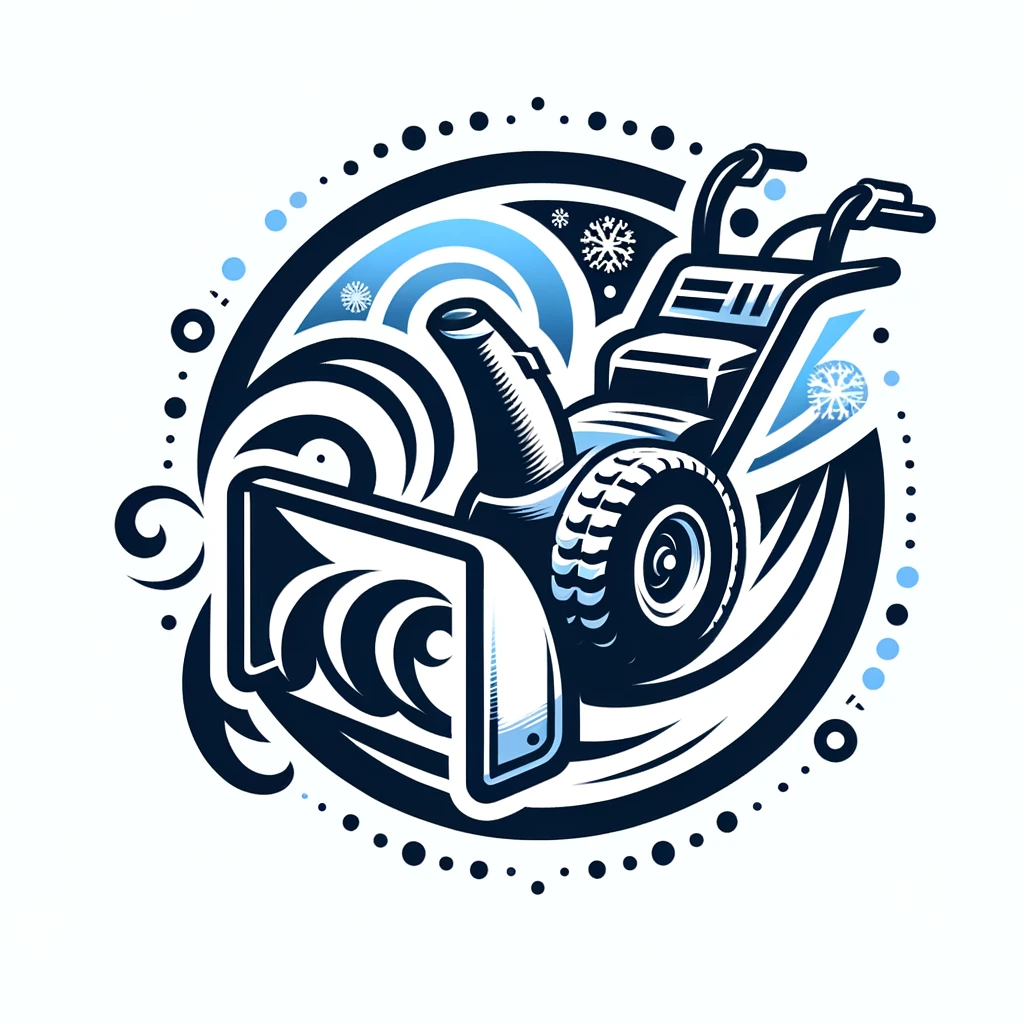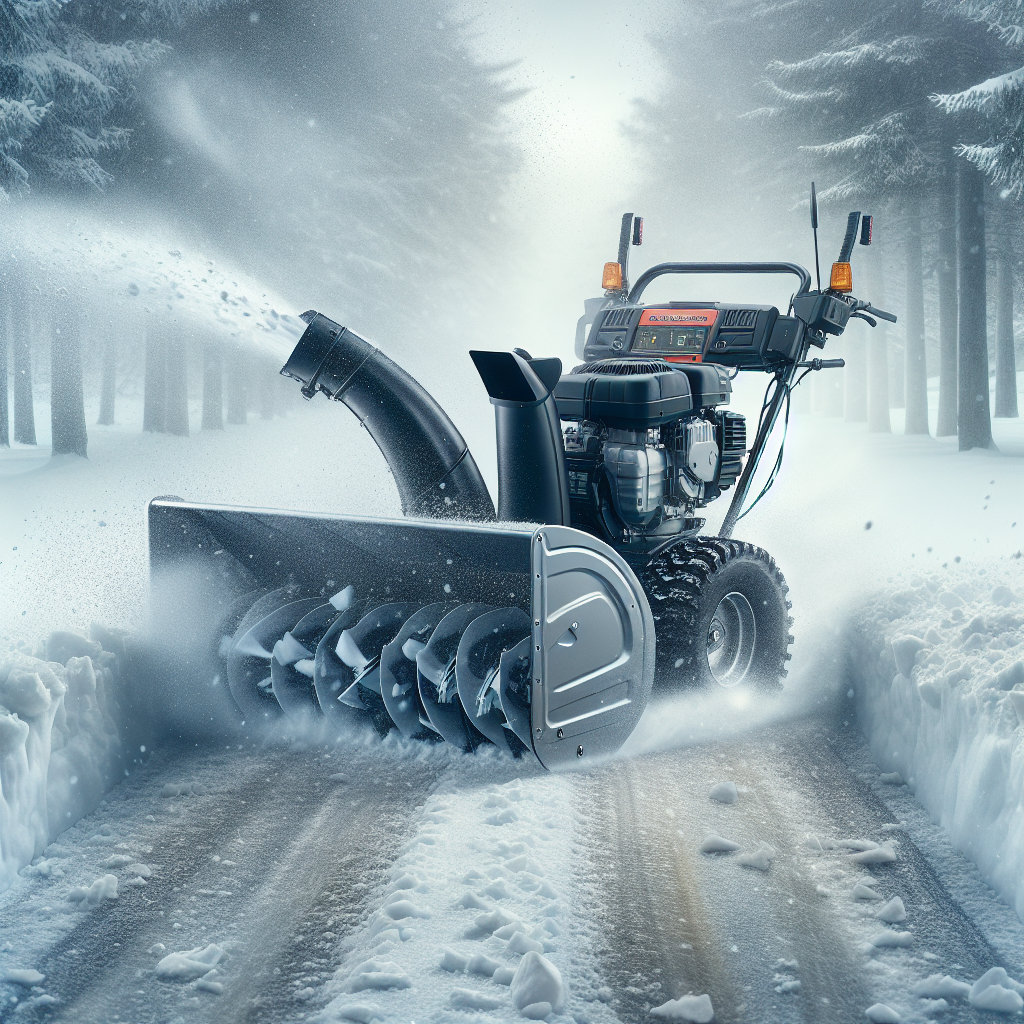Imagine waking up to a beautiful winter morning, only to find your driveway covered in a slushy mess of snow and ice. Don’t despair, for there is a mighty hero waiting to save you from this sticky situation – the snowblower. But here’s the burning question: do snowblowers work on slushy snow? In this article, we will explore the effectiveness of snowblowers when faced with slushy snow and discover whether they truly live up to their mighty reputation. So sit back, relax, and let’s find out if these machines are the ultimate warriors against slushy snow!
Common Features of Snowblowers
Power Source
Snowblowers can be powered by either electricity or gas. Electric snowblowers are typically lighter and more convenient to use, as they do not require fueling or maintenance. However, gas-powered snowblowers tend to be more powerful and can handle larger amounts of snow.
Clearing Width
The clearing width refers to the width of the path that the snowblower can clear in one pass. Snowblowers range in clearing width from around 18 inches to over 30 inches. Choosing the right clearing width depends on the size of your driveway or walkway and the amount of snowfall you typically experience.
Intake Height
The intake height of a snowblower refers to the maximum height of snow that the machine can effectively remove. It is crucial to consider the average snow depth in your area and choose a snowblower with an intake height that meets your needs.
Auger Design
The auger is a key component of a snowblower that breaks up and scoops the snow into the machine. Snowblowers can have either a single-stage or two-stage auger design. Single-stage snowblowers feature an auger that both breaks up the snow and propels it out of the chute, while two-stage snowblowers have an additional impeller to help throw the snow farther.
Impeller Design
The impeller is responsible for throwing the snow out of the chute. It works in conjunction with the auger to propel the snow away from the machine. A well-designed impeller ensures efficient snow throwing and prevents clogging.
Speed Settings
Snowblowers often come with multiple speed settings that allow you to adjust the pace at which you clear snow. Higher speeds are suitable for quickly clearing large areas, while lower speeds offer enhanced precision and control when maneuvering around obstacles or delicate surfaces.
Traction Control
Traction control is essential for maintaining stability and maneuverability while operating a snowblower. Look for models that feature adjustable traction control, such as wheel or track drives, to ensure optimal performance in various snow conditions.
Additional Features
Snowblowers may offer additional features to enhance user experience and convenience. These can include features like electric starters, headlights for visibility in low-light conditions, heated handgrips for added comfort, and chute controls that allow you to adjust the direction and distance of the snow being thrown.
Challenges with Slushy Snow
Heavy and Wet Consistency
Slushy snow has a higher water content compared to light, fluffy snow. This heavy and wet consistency can pose challenges for snowblowers, as the weight and stickiness of slush can increase the strain on the machine’s components and reduce its overall efficiency.
Ice Formation
When slushy snow gets exposed to colder temperatures, it can quickly freeze and form a layer of ice. This ice can create a slick surface that is challenging to clear with a snowblower. Additionally, the ice can cause clogging issues by freezing the auger and impeller, disrupting their functionality.
Clogging Issues
Slushy snow has a higher likelihood of clogging a snowblower’s chute and auger due to its sticky nature. Clogs can occur when the slush gets compacted or frozen, obstructing the path of the snow through the machine. This can decrease the snowblower’s effectiveness and require frequent manual clearing.
Types of Snowblowers
Single-Stage Snowblowers
Single-stage snowblowers are compact and lightweight machines designed for clearing light to moderate snowfall. They feature a single auger that both breaks up the snow and throws it out of the chute. Single-stage snowblowers work best on flat surfaces and can struggle with heavy, slushy snow due to their limited power and design.
Two-Stage Snowblowers
Two-stage snowblowers are more robust and suitable for clearing heavier snowfall, including slushy snow. They feature an auger that breaks up the snow and a separate impeller that throws the snow farther away. The two-stage design allows for better handling of wet and compacted snow, making them more effective in challenging conditions.
Three-Stage Snowblowers
Three-stage snowblowers are the most powerful and efficient type of snowblower, making them ideal for handling slushy snow. In addition to the auger and impeller, three-stage snowblowers have an accelerator that moves the snow at a faster speed through the machine. This increased velocity helps break up and clear slushy snow with ease.
Electric Snowblowers
Electric snowblowers are generally more suitable for lighter snow conditions, including freshly fallen slushy snow. They are compact, lightweight, and easy to maneuver, making them ideal for small to medium-sized areas. However, their power and clearing capacity may be limited compared to gas-powered alternatives.
Effectiveness of Snowblowers on Slushy Snow
Performance of Single-Stage Snowblowers
Single-stage snowblowers can struggle with slushy snow due to their limited power and design. The single auger may become weighed down by the heavy and wet slush, leading to clogs and reduced clearing efficiency. While they may still be able to clear slushy snow, it is important to use caution and manage expectations when using a single-stage snowblower in these conditions.
Performance of Two-Stage Snowblowers
Two-stage snowblowers excel at handling slushy snow due to their more powerful auger and impeller design. They can break up and throw slushy snow farther than single-stage snowblowers. The two-stage functionality helps prevent clogging issues by efficiently pushing the slush through the machine. With proper maintenance and operation, two-stage snowblowers provide effective clearing performance in slushy conditions.
Performance of Three-Stage Snowblowers
Three-stage snowblowers are specifically designed to handle heavy, wet, and slushy snow. With their additional accelerator component, they can power through slushy snow without significant clogging issues. Three-stage snowblowers offer exceptional clearing performance in slushy conditions, making them an excellent choice for areas that experience frequent slushy snowfalls.
Performance of Electric Snowblowers
Electric snowblowers may struggle with heavy slushy snow due to their lower power output and limited clearing capacity. However, they can still be effective for clearing freshly fallen, lighter slushy snow. It is crucial to match the capabilities of the electric snowblower to the specific slush conditions you typically experience to ensure satisfactory performance.
Tips for Using Snowblowers on Slushy Snow
Maintenance and Preparation
Before using a snowblower on slushy snow, it is essential to properly maintain and prepare the machine. Clear any debris or obstructions from the auger and impeller, as these can increase the likelihood of clogs. Lubricate moving parts to prevent freezing and ensure smooth operation. Additionally, consider using a slush-resistant oil or lubricant to minimize clogging.
Snowblowing Techniques
When operating a snowblower on slushy snow, utilize the following techniques for optimal performance:
- Adjust the speed settings accordingly – slower speeds allow for better control and maneuverability in slushy conditions.
- Clear small sections at a time – breaking down the task into smaller areas helps prevent overloading the machine and reduces the risk of clogs.
- Keep the chute clear – regularly check and clear any obstructions in the chute to maintain efficient snow throwing.
- Angle the chute downwards – setting the chute lower helps prevent slush from flying back and potentially causing clogs or accidents.
- Consider using a slush drift cutter or rubber paddles – these attachments can help break up slushy snow and enhance clearing performance.
By following these maintenance and operational tips, you can maximize the effectiveness of your snowblower on slushy snow and make your snow-clearing tasks more manageable. Remember to always prioritize safety and practice caution when operating any snow removal equipment. Stay warm and enjoy the convenience of your snowblower during the winter months!

